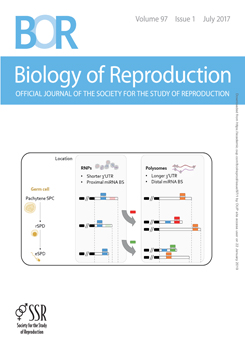Chemokines play critical roles in the establishment and maintenance of pregnancy in animals. Cysteine-X-cysteine motif chemokine ligand 9 (CXCL9), CXCL10, and CXCL11 are involved in recruiting immune cells by binding to their shared receptor, CXC receptor 3 (CXCR3), in a variety of tissues. This study examined the expression and regulation of chemokines CXCL9, CXCL10, and CXCL11, their receptor CXCR3, and their role at the maternal-conceptus interface in pigs. The endometrium expressed CXCL9, CXCL10, CXCL11, and CXCR3 stage specifically during pregnancy, with the greatest abundance on Day 15 of pregnancy. It was noted that their expression was primarily localized to stromal cells, endothelial cells, or vascular smooth muscle cells in the endometrium. Interferon-γ increased the abundance of CXCL9, CXCL10, CXCL11 mRNAs, but not CXCR3, in endometrial explants. Furthermore, recombinant CXCL9 (rCXCL9), rCXCL10, and rCXCL11 proteins increased migration of cultured peripheral blood mononuclear cells (PBMCs) in a dose-dependent manner. Recombinant CXCL9 and rCXCL10 caused migration of CD4+, CD8+, CD4+CD8+ T cells, and natural killer (NK) cells, and rCXCL11 increased migration of CD4+ T and NK cells in PBMCs. The present study demonstrated that interferon-γ-induced CXCL9, CXCL10, and CXCL11, and their receptor CXCR3 were expressed in the uterus in stage- and cell-type specific manners and increased the migration of T and NK cells, which showed the greatest endometrial infiltration on Day 15 of pregnancy. These results suggest that CXCL9, CXCL10, and CXCL11 may play an important role in the recruitment of immune cells into the endometrium during the implantation period in pigs.
Summary Sentence
Chemokines CXCL9, 10, and 11 induced by interferon-gamma of conceptus origin in the endometrium are involved in the recruitment of immune cells at the maternal-conceptus interface in pigs.





